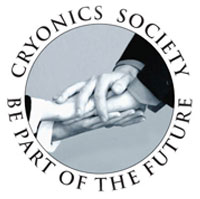
In Cases of Medical Emergency:
IN EMERGENCY CASES BE AWARE THAT TO ENSURE LEGAL SAFETY AND TO AVOID THE POSSIBILITY OF MISHAP, A PERSON MUST BE LEGALLY PRONOUNCED DEAD BEFORE ANY COOLING PROCEDURES ARE IMPLEMENTED.
IF THE PERSON HAS DIED, AND HAS LEGALLY BEEN PRONOUNCED DEAD, COOL HIM OR HER IMMEDIATELY WITH ICE OR ICE WATER. PAY SPECIAL ATTENTION TO COOLING THE DECEASED PERSON’S HEAD.
Ice cubes, crushed ice, water, water ice, or even very cold water can be used to cool down the deceased person. If ice cubes in ice bags are used, be sure to completely cover the front, top, back and sides of the person’s head.
IF THE PERSON IS WEARING IDENTIFICATION INDICATING MEMBERSHIP IN AN EXISTING CRYONICS ORGANIZATION, CONTACT THAT ORGANIZATION AT ONCE.
The 24-hour EMERGENCY ONLY contact number of the Alcor Foundation is 1-800-367-2228. In ALL NON-EMERGENCY CASES contact Alcor at 1-480-905-1906 or toll-free at 1-877-462-5267.
If the deceased is a member of the Cryonics Institute, contact the Institute at 1-586-791-5961. Otherwise contact the Cryonics Institute at 1-586-791-5961. (If at all possible, please also review the Cryonics Institute’s emergency orientation web pages beforehand at www.cryonics.org/emergency.htm.)
IF THERE IS NO RESPONSE, CONTACT THE CRYONICS SOCIETY AT 1-585-643-1167 WHILE THE INDICATED COOLING MEASURES ARE BEING TAKEN.
The Cryonics Society can be reached twenty-four hours a day and will help facilitate contact with an available and qualified cryonics treatment provider.
Once contact with a suspension services organization has been made, FOLLOW THE TREATMENT PROVIDER’S INSTRUCTIONS. Till then, if assistance is available, and it is possible to immerse the deceased person’s body completely in a cold water bath or to completely cover the person with ice cubes in plastic bags, try to do so to the best of your capacity.
In addition, if anyone has CPR (Cardio-Pulmonary Resuscitation) training, apply CPR techniques to keep blood circulating in the deceased person’s body for as long as possible, or until assistance arrives.
If possible, persons who are may be in the proximity of a cryonics member in vulnerable health should have formal CPR training beforehand. A description of CPR techniques is available on the University of Washington’s LEARN CPR web site.
Note: all text and commentary in the Cryonics Society web site may not be reproduced without the written prior consent of the authors.
Email: contact @ cryonicssociety.org
Tel.: 585-473-3321